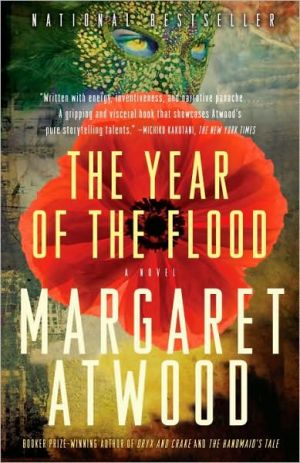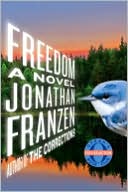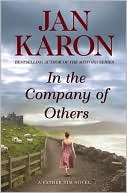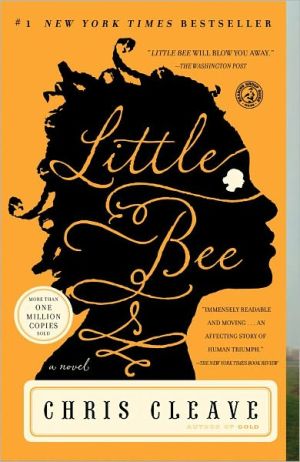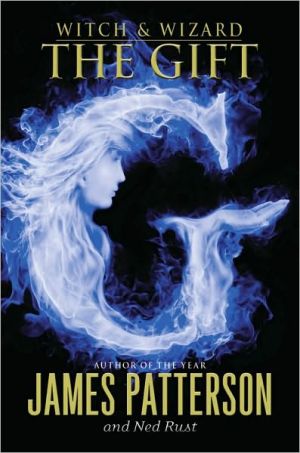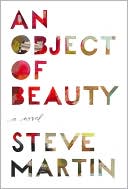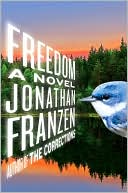The Year of the Flood
Set in the visionary future of Atwood’s acclaimed Oryx and Crake, The Year of the Flood is at once a moving tale of lasting friendship and a landmark work of speculative fiction. In this second book of the MaddAddam trilogy, the long-feared waterless flood has occurred, altering Earth as we know it and obliterating most human life. Among the survivors are Ren, a young trapeze dancer locked inside the high-end sex club Scales and Tails, and Toby, who is barricaded inside a luxurious spa. Amid...
Search in google:
The long-awaited new novel from Margaret Atwood. The Year of the Flood is a dystopic masterpiece and a testament to her visionary power. The times and species have been changing at a rapid rate, and the social compact is wearing as thin as environmental stability. Adam One, the kindly leader of the God's Gardeners-a religion devoted to the melding of science and religion, as well as the preservation of all plant and animal life-has long predicted a natural disaster that will alter Earth as we know it. Now it has occurred, obliterating most human life. Two women have survived: Ren, a young trapeze dancer locked inside the high-end sex club Scales and Tails, and Toby, a God's Gardener barricaded inside a luxurious spa where many of the treatments are edible.Have others survived? Ren's bioartist friend Amanda? Zeb, her eco-fighter stepfather? Her onetime lover, Jimmy? Or the murderous Painballers, survivors of the mutual-elimination Painball...The New York Times Book Review - Jeanette WintersonAtwood is funny and clever, such a good writer and real thinker that there's hardly any point saying that not everything in the novel works. Why should it? A high level of creativity has to let in some chaos…The flaws in The Year of the Flood are part of the pleasure, as they are with human beings, that species so threatened by its own impending suicide and held up here for us to look at, mourn over, laugh at and hope for. Atwood knows how to show us ourselves, but the mirror she holds up to life does more than reflect—it's like one of those mirrors made with mercury that gives us both a deepening and a distorting effect, allowing both the depths of human nature and its potential mutations. We don't know how we will evolve, or if we will evolve at all. The Year of the Flood isn't prophecy, but it is eerily possible.
1Toby. Year Twenty-five, the Year of the Flood.\ In the early morning Toby climbs up to the rooftop to watch the sunrise. She uses a mop handle for balance: the elevator stopped working some time ago and the back stairs are slick with damp, so if she slips and topples there won't be anyone to pick her up. As the first heat hits, mist rises from among the swathe of trees between her and the derelict city. The air smells faintly of burning, a smell of caramel and tar and rancid barbecues, and the ashy but greasy smell of a garbage-dump fire after it's been raining. The abandoned towers in the distance are like the coral of an ancient reef—bleached and colourless, devoid of life. There still is life, however. Birds chirp; sparrows, they must be. Their small voices are clear and sharp, nails on glass: there's no longer any sound of traffic to drown them out. Do they notice that quietness, the absence of motors? If so, are they happier? Toby has no idea. Unlike some of the other Gardeners—the more wild-eyed or possibly overdosed ones—she has never been under the illusion that she can converse with birds. The sun brightens in the east, reddening the blue-grey haze that marks the distant ocean. The vultures roosting on hydro poles fan out their wings to dry them, opening themselves like black umbrellas. One and then another lifts off on the thermals and spirals upwards. If they plummet suddenly, it means they've spotted carrion. Vultures are our friends, the Gardeners used to teach. They purify the earth. They are God's necessary dark Angels of bodily dissolution. Imagine how terrible it would be if there were no death!Do I still believe this? Toby wonders. Everything is different up close.\ The rooftop has some planters, their ornamental running wild; it has a few fake-wood benches. It used to have a sun canopy for cocktail hour, but that's been blown away. Toby sits on one of the benches to survey the grounds. She lifts her binoculars, scanning from left to right. The driveway, with its lumirose borders, untidy now as as frayed hairbrushes, their purple glow fading in the strengthening light. The western entrance, done in pink adobe-style solarskin, the snarl of tangled cars outside the gate. The flowerbeds, choked with sow thistle and burdock, enormous aqua kudzu moths fluttering above them. The fountains, their scallop-shell basins filled with stagnant rainwater. The parking lot with a pink golf cart and two pink AnooYoo minibuses, each with its winking-eye logo. There's a fourth minibus further along the drive, crashed into a tree: there used to be an arm hanging out of the window, but it's gone now.The wide lawns have grown up, tall weeds. There are low irregular mounds beneath the milkweed and fleabane and sorrel, with here and there a swatch of fabric, a glint of bone. That's where the people fell, the ones who'd been running or staggering across the lawn. Toby had watched from the roof, crouched behind one of the planters, but she hadn't watched for long. Some of those people had called for help, as if they'd known she was there. But how could she have helped? The swimming pool has a mottled blanket of algae. Already there are frogs. The herons and the egrets and the peagrets hunt them, at the shallow end. For a while Toby tried to scoop out the small animals that had blundered in and drowned. The luminous green rabbits, the rats, the rakunks, with their striped tails and racoon bandit masks. But now she leaves them alone. Maybe they'll attract fish, somehow.Is she thinking of eating these future fish? Surely not. Surely not yet.She turns to the dark encircling wall of trees and vines and fronds and shrubby undergrowth, probing it with her binoculars. It's surely from there that any danger might come. But what kind of danger? She can't imagine.\ In the night there are the usual noises: the faraway barking of dogs, the tittering of mice, the water-pipe notes of the crickets, the occasional grumph of a frog. The blood rushing in her ears: katoush, katoush, katoush. A heavy broom sweeping dry leaves. "Go to sleep," she says out loud. But she never sleeps well, not since she's been alone in this building. Sometimes she hears voices—human voices, calling to her in pain. Or the voices of women, the women who used to work here, the anxious women who used to come, for rest and rejuvenation. Splashing in the pool, strolling on the lawns. All the pink voices, soothed and soothing. Or the voices of the Gardeners, murmuring or singing; or the children laughing together, up on the Edencliff Garden. Adam One, and Nuala, and Burt. Old Pilar, surrounded by her bees. And Zeb. If any one of them is still alive, it must be Zeb. Surely is he on his way, any day now he'll come walking along the roadway or appear from among the trees. But he must be dead by now. It's better to think so. Not to waste hope.There must be someone else left, though; she can't be the only one on the planet. There must be others. But friends or foes? If she sees one, how to tell? She's prepared. The doors are locked, the windows barred. But even such barriers are no guarantee: every hollow space invites invasion. Even when she sleeps, she's listening, as animals do—for a break in the pattern, for an unknown sound, for a silence opening like a crack in rock. When the small creatures hush their singing, said Adam One, it's because they're afraid. You must listen for the sound of their fear.\ 2Ren. Year Twenty-five, the year of the Flood.\ Beware of words. Be careful what you write. Leave no trails.This is what the Gardeners taught us, when I was a child among them. They taught us to depend on memory, because nothing written down could be relied on. The Spirit travels from mouth to mouth, not from thing to thing: books could be burnt, paper crumble away, computers could be destroyed. Only the Spirit lives forever, and the Spirit isn't a thing. As for writing, it was dangerous, said the Adams and the Eves, because your enemies could trace you through it, and hunt you down, and use your words to condemn you.But now that the Waterless Flood has swept over us, any writing I might do is safe enough, because those who might have used it against me are surely dead. So I can write down anything I want. What I write is my name, Ren, with an eyebrow pencil, on the wall beside the mirror. I've written it a lot of times. Renrenren, like a song. You can forget who you are if you're alone too much. Amanda told me that. I can't see out the window, it's glass brick. I can't get out the door, it's locked on the outside. I still have air though, and water, as long as the solar doesn't quit. I still have food. I'm lucky. I'm really very lucky. Count your luck, Amanda used to say. So I do. First, I was lucky to be working here at Scales when the Flood hit. Second, it was even luckier that I was shut up this way in the Sticky Zone, because it kept me safe. I got a rip in my Biofilm Bodyglove—a client got carried away and bit me, right through the green sequins and I was waiting for my test results. It wasn't a wet rip with secretions and membranes involved, it was a dry rip near the elbow, so I wasn't that worried. Still, they checked everything, here at Scales. They had a reputation to keep up: we were known as the cleanest dirty girls in town. Scales took care of you, they really did. If you were talent, that is. Good food, a doctor if you needed one, and the tips were great, because the men from the top Corps came here. It was well run, though it was in a seedy area—all the clubs were. That was a matter of image, Mordis would say: seedy was good for business, because unless there's an edge—something lurid or tawdry, a whiff of sleaze—what separated our brand from the run-of-the-mill product the guy could get at home, with the face cream and the white cotton panties? Mordis believed in plain speaking. He'd been in the business ever since he was a kid, and when they outlawed the pimps and the street trade—for public health and the safety of women, they said—and rolled everything into SeksMart under CorpSeCorps control, Mordis made the jump, because of his experience. "It's who you know," he used to say. "And what you know about them." Then he'd grin, and pat you on the bum—just a friendly pat though, he never took freebies from us. He had ethics.He was a wiry guy with a shaved head and black, shiny, alert eyes like the heads of ants, and he was easy as long as everything was cool. But he'd stand up for us if the clients got violent. "Nobody hurts my best girls," he'd say. It was a point of honour with him. Also he didn't like waste: we were a valuable asset, he'd say. The cream of the crop. After the SeksMart roll-in, anyone left outside the system was not only illegal but pathetic. A few wrecked, diseased old women wandering the alleyways, practically begging. No man with even a fraction of his brain left would go anywhere near them. "Hazardous waste," we Scales girls used to call them. We shouldn't have been so scornful; we should have had compassion. But compassion takes work, and we were young.\ That night when the Waterless Flood began, I was waiting for my test results: they kept you locked in the Sticky Zone for weeks, in case you had something contagious. The food came in through the safety-sealed hatchway, plus there was the mini-fridge with snacks, and the water was filtered, coming in and out both. You had everything you needed, but it got boring in there. You could exercise on the machines, and I did a lot of that, because a trapeze dancer needs to keep in practice. You could watch TV or old movies, play your music, talk on the phone. Or you could visit the other rooms in Scales on the intercom video. Sometimes when we doing plank work we'd wink at the cameras in mid-moan for the benefit of whoever was stuck in the Sticky Zone. We knew where the cameras were hidden, in the snakeskin or featherwork on the ceilings. It was one big family, at Scales, so even when you were in the Sticky Zone, Mordis liked you to feel you were still participating.Mordis made me feel so secure. I knew if I was in big trouble I could go to him. There were only a few people in my life like that. Amanda, most of the time. Zeb, sometimes. And Toby. You wouldn't think it would be Toby—she was so tough and hard—but if you're drowning, a soft squashy thing is no good to hold onto. You need something more solid.\ CREATION DAY\ Year Five.\ Of the Creation, and of the Naming of the Animals.Spoken by Adam One.\ Dear Friends, dear fellow Creatures, dear fellow Mammals: On Creation Day five years ago, this Edencliff Rooftop Garden of ours was a sizzling wasteland, hemmed in by festering city slums and dens of wickedness; but now it has blossomed as the rose. By covering such barren rooftops with greenery we are doing our small part in the redemption of God's Creation from the decay and sterility that lies all around us, and feeding ourselves with unpolluted food into the bargain. Some would term our efforts futile, but if all were to follow our example, what a change would be wrought on our beloved Planet! Much hard work still lies before us, but fear not, my Friends; for we shall move forward undaunted.I am glad we have all remembered our sunhats.\ Now let us turn our minds to our annual Creation Day Devotion. The Human Words of God speak of the Creation in terms that could be understood by the men of old. There is no talk of galaxies or genes, for such terms would have confused them greatly! But must we therefore take as scientific fact the story that the world was created in six days, thus making a nonsense of observable data? God cannot be held to the narrowness of literal and materialistic interpretations, nor measured by Human measurements, for His days are eons, and a thousand ages of our time are like an evening to Him. Unlike some other religions, we have never felt it served a higher purpose to lie to children about geology.Remember the first sentences of those Human Words of God: the Earth is without form, and void, and then God speaks Light into being. This is the moment that Science terms "The Big Bang," as if it were a sex orgy. Yet both accounts concur in their essence: Darkness; then, in an instant, Light. But surely the Creation is ongoing, for are not new stars being formed at every moment? God's Days are not consecutive, my Friends; they run concurrently, the first with the third, the fourth with the sixth. As we are told, "Thou sendeth forth thy Spirit, they are created; and Thou renewest the face of the Earth." We are told that, on the fifth day of God's Creating activities, the waters brought forth Creatures, and on the sixth day the dry land was populated with Animals, and with plants and Trees; and all were blessed, and told to multiply; and finally Adam—that is to say, Mankind—was created. According to Science, this is the same order in which the species did in fact appear on the planet, Man last of all. Or more or less the same order. Or close enough.What happens next? God brings the Animals before Man, "to see what he would call them." But why didn't God already know what names Adam would choose? The answer can only be that God has given Adam free will, and therefore Adam may do things that God Himself cannot anticipate in advance. Think of that the next time you are tempted by meat-eating or material wealth! Even God may not always know what you are going to do next!God must have caused the Animals to assemble by speaking to them directly, but what language did He use? It was not Hebrew, my Friends. It was not Latin or Greek, or English, or French, or Spanish, or Arabic, or Chinese. No: He called the Animals in their own languages. To the Reindeer He spoke Reindeer, to the Spider, Spider; to the Elephant He spoke Elephant, to the Flea He spoke Flea, to the Centipede He spoke Centipede, and to the Ant, Ant. So must it have been.And for Adam himself, the Names of the Animals were the first words he spoke—the first moment of Human language. In this cosmic instant, Adam claims his Human soul. To Name is—we hope—to greet; to draw another towards one's self. Let us imagine Adam calling out the Names of the Animals in fondness and joy, as if to say—There you are, my dearest! Welcome! Adam's first act towards the Animals was thus one of loving-kindness and kinship, for Man in his unfallen state was not yet a carnivore. The Animals knew this, and did not run away. So it must have been on that unrepeatable Day—a peaceful gathering at which every living entity on the Earth was embraced by Man. How much have we lost, dear fellow Mammals and fellow Mortals! How much have we wilfully destroyed! How much do we need to restore, within ourselves! The time of the Naming is not over, my Friends. In His sight, we may still be living in the sixth day. As your Meditation, imagine yourself rocked in that sheltering moment. Stretch out your hand towards those gentle eyes that regard you with such trust—a trust that has not yet been violated by bloodshed and gluttony and pride and disdain. Say their Names. Let us sing.
\ From Barnes & NobleMargaret Atwood's novel somehow manages to be both futuristic and primordial. Set in a post-apocalyptic age when most of humanity has been obliterated, The Year of the Flood tracks its two rare, perhaps unique female survivors. Ren, a supple young trapeze dancer who is imprisoned inside a sex, club and Toby, an ex-counter clerk who has become a follower of Adam One, the religious leader who predicted the catastrophic natural disaster. Beyond this mismatched trio are a host of bizarre walk-ons and sideshow characters, not to mention an ominous police state waiting in the wings.\ \ \ \ \ Jeanette WintersonAtwood is funny and clever, such a good writer and real thinker that there's hardly any point saying that not everything in the novel works. Why should it? A high level of creativity has to let in some chaos…The flaws in The Year of the Flood are part of the pleasure, as they are with human beings, that species so threatened by its own impending suicide and held up here for us to look at, mourn over, laugh at and hope for. Atwood knows how to show us ourselves, but the mirror she holds up to life does more than reflect—it's like one of those mirrors made with mercury that gives us both a deepening and a distorting effect, allowing both the depths of human nature and its potential mutations. We don't know how we will evolve, or if we will evolve at all. The Year of the Flood isn't prophecy, but it is eerily possible.\ —The New York Times Book Review\ \ \ Michiko KakutaniMs. Atwood has loosened up in this volume and given her imagination free rein…By focusing on her characters and their perilous journeys through a nightmare world, she has succeeded in writing a gripping and visceral book that showcases the pure storytelling talents she displayed with such verve in her 2000 novel, The Blind Assassin.\ —The New York Times\ \ \ \ \ Michael DirdaBy its last half The Year of the Flood has turned into a heart-pounding thriller, a desperate Painball game to the death set in an already devastated world. Still, the book regularly undercuts the horrific with touches of comedy…and Atwood superbly captures the voices and attitudes of the serious Adam One, the frivolous Lucerne, the resourceful Toby and the rather simple-minded and fragile Ren. Canada's greatest living novelist undoubtedly knows how to tell a gripping story, as fans of The Blind Assassin and The Handmaid's Tale already know. But here there's a serious message, too: Look at what we're doing right now to our world, to nature, to ourselves. If this goes on…\ —The Washington Post\ \ \ \ \ Publishers WeeklyReviewed by Marcel TherouxIn her 2002 speculative novel, Oryx and Crake, Margaret Atwood depicted a dystopic planet tumbling toward apocalypse. The world she envisaged was in the throes of catastrophic climate change, its wealthy inhabitants dwelling in sterile secure compounds, its poor ones in the dangerous “pleeblands” of decaying inner cities. Mass extinctions had taken place, while genetic experiments had populated the planet with strange new breeds of animal: liobams, Mo'Hairs, rakunks. At the end of the book, we left its central character, Jimmy, in the aftermath of a devastating man-made plague, as he wondered whether to befriend or attack a ragged band of strangers. The novel seemed complete, closing on a moment of suspense, as though Atwood was content simply to hint at the direction life would now take. In her profoundly imagined new book, The Year of the Flood, she revisits that same world and its catastrophe. Like Oryx and Crake, Year of the Flood begins just after the catastrophe and then tracks back in time over the corrupt and degenerate world that preceded it. But while the first novel focused on the privileged elite in the compounds and the morally bankrupt corporations, The Year of the Flood depicts more of the world of the pleebs, an edgy no-man's land inhabited by criminals, sex workers, dropouts and the few individuals who are trying to resist the grip of the corporations.The novel centers on the lives of Ren and Toby, female members of afundamentalist sect of Christian environmentalists, the God's Gardeners. Led by the charismatic Adam One, whose sermons and eco-hymns punctuate the narrative, the God's Gardeners are preparing for life after the prophesied Waterless Flood. Atwood plays some of their religion for laughs: their hymns have a comically bouncing, churchy rhythm, and we learn that both Ren and Toby have been drawn toward the sect for nonreligious reasons. Yet the gentleness and benignity of the Gardeners is a source of hope as well as humor. As absurd as some of their beliefs appear, Atwood seems to be suggesting that they're a better option than the naked materialism of the corporations.This is a gutsy and expansive novel, rich with ideas and conceits, but overall it's more optimistic than Oryx and Crake. Its characters have a compassion and energy lacking in Jimmy, the wounded and floating lothario at the previous novel's center.Each novel can be enjoyed independently of the other, but what's perhaps most impressive is the degree of connection between them. Together, they form halves of a single epic. Characters intersect. Plots overlap. Even the tiniest details tessellate into an intricate whole. In the final pages, we catch up with Jimmy once more, as he waits to encounter the strangers. This time around, Atwood commits herself to a dramatic and hopeful denouement that's in keeping with this novel's spirit of redemption.Marcel Theroux's most recent novel, Far North, was published by Farrar, Straus & Giroux in June.\ \ \ \ \ Library JournalNever one to rest on her laurels, famed Canadian author Atwood redeems the word sequel with this brilliant return to the nightmarish future first envisioned in Oryx and Crake. Contrary to expectations, the waterless flood, a biological disaster predicted by a fringe religious group, actually arrives. In its wake, the survivors must rely on their wits to get by, all the while reflecting on what went wrong. Atwood wins major style points here for her framing device, the liturgical year of the God's Gardeners sect. Readers who enjoy suspense will also appreciate the story's shifting viewpoint and nonlinear time line, which result in the gradual revelation of key events and character relationships. Atwood's heroines seem uniformly grim and hollow, but one can hardly expect cheerfulness in the face of the apocalypse, and the hardships of their lives both pre- and postflood are moving and disturbing. VERDICT Another win for Atwood, this dystopian fantasy belongs in the hands of every highbrow sf aficionado and anyone else who claims to possess a social conscience. [See Prepub Alert, LJ 6/1/09.]—Leigh Anne Vrabel, Carnegie Lib. of Pittsburgh\ \ \ \ \ Kirkus ReviewsAtwood returns to the post-apocalyptic world she imagined in Oryx and Crake (2003, etc.). In the futuristic year Twenty-Five, the world is run by corporations; genetic experiments include splicing animals like lions and lambs; and the environment is increasingly a wasteland. When the viral "waterless flood," long predicted by Adam One of a religious/environmentalist cult called The Gardeners, decimates the world's human population, there are only a few survivors. At the AnooYoo spa, which she has been managing under a pseudonym to hide from a psychopathic sexual stalker, Toby stays alive using the skills she learned as a longtime Gardener, conserving, foraging and hunting when necessary. Across the city, sex worker Ren survives because she happened to be locked in an isolation room at the Scales and Tales strip club when the virus hit. As Ren and Toby each wonder whether she is the only human left alive, both relive the last 15 years, which shaped their individual fates and led to the apocalypse. Ren knew Toby as one of the Eves, female leaders of The Gardeners, with whom she lived as a child while her mother was having an affair with mysterious renegade member Zeb. Eventually Ren and her mother returned to the HelthWyzer Compound; there teenage Ren fell in love and had her heart broken by Jimmy, protagonist of Oryx and Crake. Ren's best friend Amanda, a street kid adopted by The Gardeners, has also survived. She makes her way to Ren, the two join up with members of a splinter group of Gardeners headed by Zeb, and they all head toward AnooYoo. Unfortunately, not only Gardeners have survived. The women confront evil as well as a demented version of perfection developed by Jimmy'scrazed-genius friend Crake. Atwood wears her politics on her sleeve, but she doesn't shy away from showing the Gardeners' tendency toward self-righteous foolishness. Another stimulating dystopia from this always-provocative author, whose complex, deeply involving characters inhabit a bizarre yet frighteningly believable future. Author tour to New York, Washington, D.C., Boston, Chicago, San Francisco, Seattle, Los Angeles, Austin, Denver, Miami\ \
